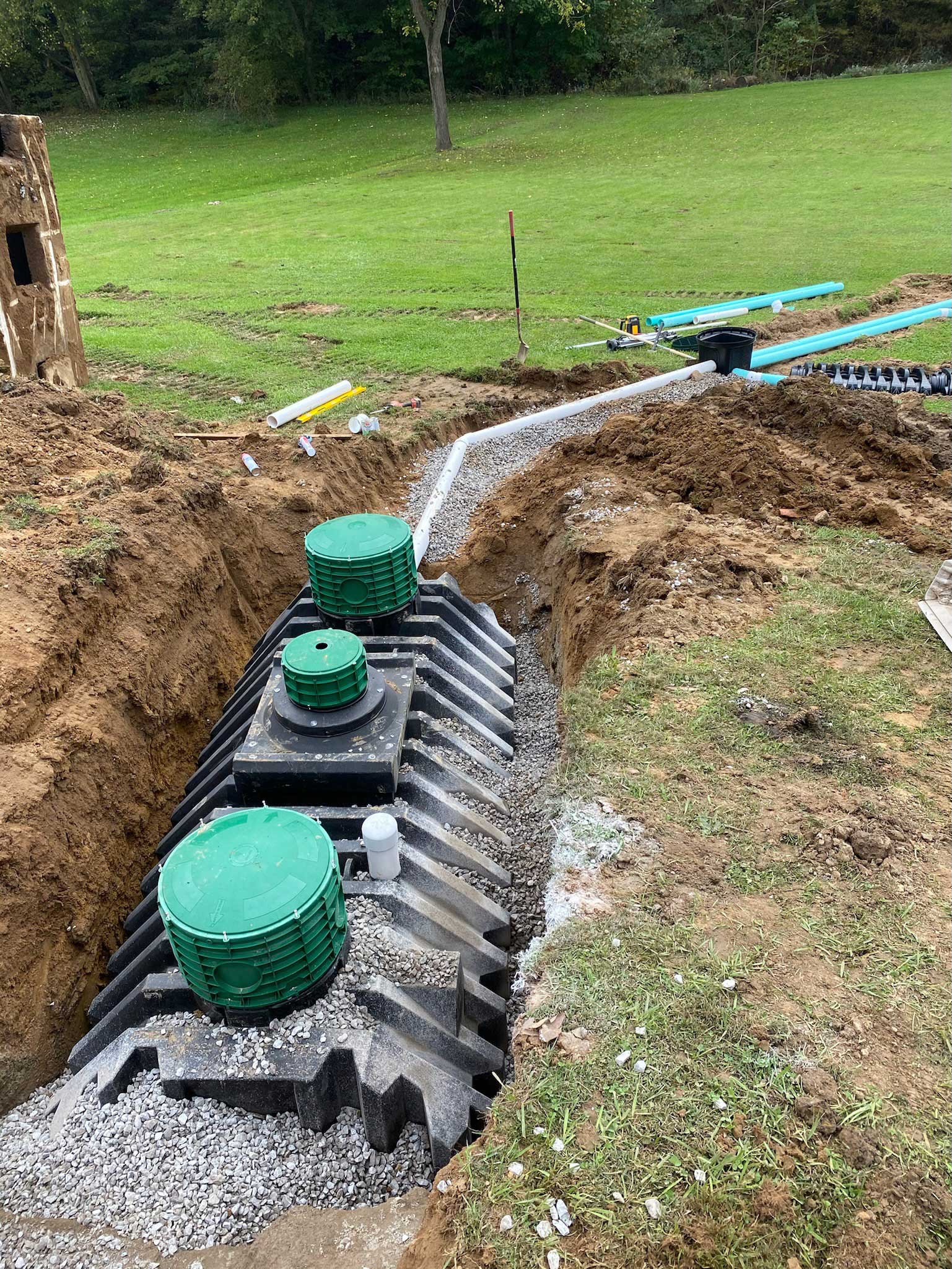Lancaster Trenching - Specialist Trenching Solutions in Lancaster, Ohio
Lancaster Trenching - Specialist Trenching Solutions in Lancaster, Ohio
Blog Article
Introducing the Art of Excavation: Pro Tips for Safe and Effective Excavating
In the world of excavation, the proficiency of secure and effective digging is an art form that requires understanding, precision, and adherence to well-known techniques. As dirt is turned and earth is relocated, the complexities of excavation reveal themselves, demanding a keen understanding of devices, soil composition, safety protocols, and environmental considerations. The proficiency needed to browse these elements properly can mean the difference in between a successful excavation job and a possible catastrophe. By deciphering the layers of this complex process, a world of understandings and approaches waits for those looking for to elevate their excavation skills to new heights.
Relevance of Proper Tools
To ensure the safety and efficiency of any type of excavation task, making use of the appropriate tools is paramount. Excavation projects differ in extent and complexity, ranging from small domestic landscaping jobs to large building and construction tasks.
These flexible makers come in numerous sizes to suit various task requirements. Tiny excavators are perfect for smaller sized jobs, while larger excavators tackle much more extensive projects successfully.
Aside from excavators, other important tools consists of dump vehicles, trenchers, and excavators. Dispose vehicles are essential for getting rid of and transporting excavated products, while plates are used for digging slim and deep trenches. Bulldozers stand out in jobs that call for pressing big quantities of dirt or particles. By purchasing the suitable equipment, excavation jobs can be finished securely, in a timely manner, and with precision.
Recognizing Dirt Composition
An extensive grasp of dirt composition is fundamental for executing excavation jobs with precision and safety and security. Comprehending the various types of dirt is critical as it straight affects excavation techniques, equipment choice, and overall job efficiency.
Sand bits are the biggest and offer excellent water drainage however offer little communication. Silt fragments are smaller sized than sand yet bigger than clay, providing moderate drainage and cohesion. Clay fragments are the smallest and supply high cohesion yet bad drain. Raw material, such as rotting plant product, affects dirt fertility and stability.
Before beginning excavation, carrying out soil tests to identify its make-up and features is important. This info helps in picking the suitable tools, carrying out safety actions, and creating excavation strategies tailored to the specific soil conditions - septic ohio. By understanding soil make-up, excavation specialists can enhance project outcomes while ensuring safety and adherence to best practices
Security Measures and Methods
Understanding soil make-up is the foundation upon which precaution and methods for excavation tasks are developed, ensuring the well-being of employees and the success of the endeavor. There are numerous essential measures that should be applied to reduce risks and protect against accidents. when it comes to security throughout excavation.
Primarily, before any excavating commences, a detailed inspection of the website should be performed to determine any prospective threats such as underground energies, unpredictable soil problems, or neighboring frameworks that might present a risk. It is vital to have a qualified person manage the excavation procedure to make sure that all security procedures are complied with strictly.
Additionally, all employees associated with the excavation has to be effectively learnt risk-free digging techniques and the correct operation of devices. Personal protective tools (PPE) such as construction hats, high presence clothing, gloves, and safety boots need to be worn at all times to reduce the risk of injuries. lancaster excavation. Regular safety meetings and toolbox talks ought to likewise be navigate to this website performed to keep all workers informed regarding possible risks and reinforce risk-free work practices. By sticking to these precaution and methods, excavation tasks can be completed effectively and without case.
Efficient Excavation Preparation
When starting an excavation task, careful preparation is necessary to make sure effectiveness, safety and security, and effective results. Efficient excavation planning includes a number of key steps that are crucial for the smooth implementation of the job. The very first step is to perform a comprehensive site evaluation to identify any type of possible risks, such as underground energies or unsteady dirt problems. This information is essential Full Article for developing an in-depth excavation plan that consists of precaution and risk mitigation techniques.
Once the website assessment is complete, the next action is to create a clear timeline and schedule for the excavation tasks. This includes determining the sequence of jobs, devices demands, and manpower allocation. Appropriate scheduling assists stay clear of hold-ups and ensures that the project remains on track.

In addition, communication among all staff member is vital throughout the preparation stage. Clear instructions, normal updates, and reliable coordination are necessary for an effective excavation job. By spending time and initiative in thorough preparation, excavation groups can dramatically boost efficiency, minimize risks, and attain successful outcomes.

Managing Environmental Considerations
With enhancing emphasis on ecological sustainability in building methods, managing ecological considerations has actually ended up being a crucial aspect of excavation tasks. Excavation activities have the possible to impact the surrounding environment with soil disintegration, debris overflow, habitat disruption, and contamination of water sources. To mitigate these dangers, it is essential to execute best techniques that focus on environmental management.

Additionally, correct waste administration is vital to avoid dirt and water contamination. Executing treatments for the disposal of hazardous materials, recycling of waste products, and reducing making use of harmful chemicals can considerably lower the environmental influence of excavation jobs. By incorporating these practices into excavation planning and implementation, building and construction firms can make sure that their projects are not just safe and productive but additionally eco liable.
Verdict
Finally, grasping the art of excavation calls for a thorough understanding of proper devices, dirt make-up, precaution, and reliable planning. By complying with these standards and thinking about ecological variables, excavations can be conducted securely and effectively. It is crucial to focus on security and performance in every digging job to make certain effective results.
As soil is turned and planet is relocated, the ins and outs of excavation expose themselves, demanding a keen understanding of devices, dirt structure, safety and security protocols, and ecological factors to consider.To make sure the safety and effectiveness of any kind of excavation job, using the appropriate devices is critical.A detailed grasp of dirt structure is essential for performing excavation projects with precision and safety. Recognizing the different kinds of soil is crucial as it directly influences excavation techniques, devices selection, and general job efficiency. By recognizing soil composition, excavation specialists can boost task outcomes while ensuring safety and adherence to ideal methods.
Report this page